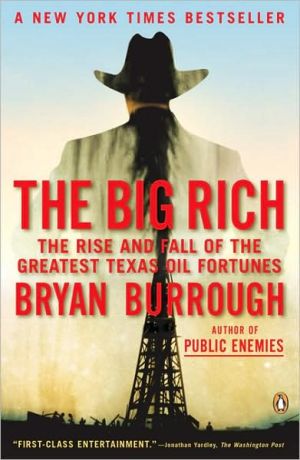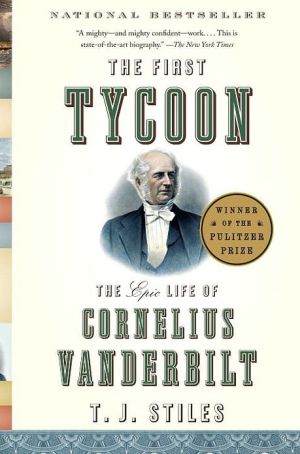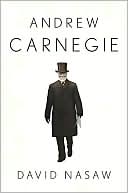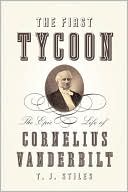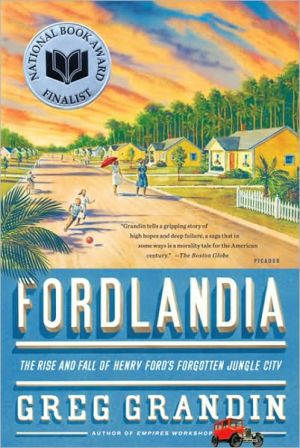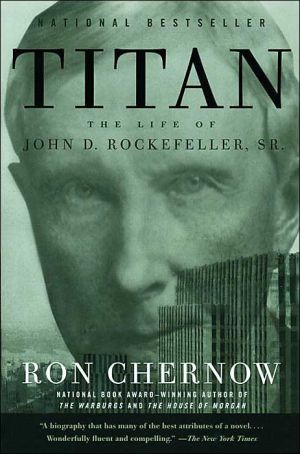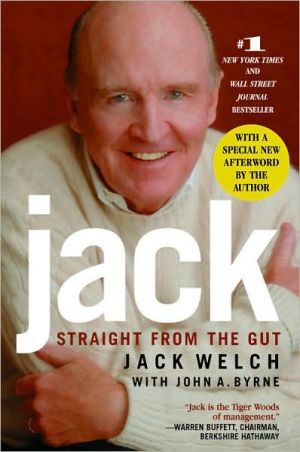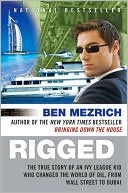The Big Rich: The Rise and Fall of the Greatest Texas Oil Fortunes
"What's not to enjoy about a book full of monstrous egos, unimaginable sums of money, and the punishment of greed and shortsightedness?"\ Phenomenal reviews and sales greeted the hardcover publication of The Big Rich, New York Times bestselling author Bryan Burrough's spellbinding chronicle of Texas oil. Weaving together the multigenerational sagas of the industry's four wealthiest families, Burrough brings to life the men known in their day as the Big Four: Roy Cullen, H. L. Hunt, Clint...
Search in google:
In The Big Rich, bestselling author and Vanity Fair special correspondent Bryan Burrough chronicles the rise and fall of one of the great economic and political powerhouses of the twentieth century—Texas oil. By weaving together the epic sagas of the industry's four greatest fortunes, Burrough has produced an enthralling tale of money, family, and power in the American century.Known in their day as the Big Four, Roy Cullen, H. L. Hunt, Clint Murchison, and Sid Richardson were all from modest backgrounds, and all became patriarchs of the wealthiest oil families in Texas. As a class they came to be known as the Big Rich, and together they created a new legend in America—the swaggering Texas oilman who owns private islands, sprawling ranches and perhaps a football team or two, and mingles with presidents and Hollywood stars.The truth more than lives up to the myth. Along with their peers, the Big Four shifted wealth and power in America away from the East Coast, sending three of their state's native sons to the White House and largely bankrolling the rise of modern conservatism in America. H. L. Hunt became America's richest man by grabbing Texas's largest oilfield out from under the nose of the man who found it; he was also a lifelong bigamist. Clint Murchison entertained British royalty on his Mexican hacienda and bet on racehorses—and conducted dirty deals—with J. Edgar Hoover. Roy Cullen, an elementary school dropout, used his millions to revive the hapless Texas GOP. And Sid Richardson, the Big Four's fun-loving bachelor, was a friend of several presidents, including, most fatefully, Lyndon Johnson.The Big Four produced offspring who frequently made more headlines, and in some cases more millions, than they did. With few exceptions, however, their fortunes came to an end in a swirl of bitter family feuds, scandals, and bankruptcies, and by the late 1980s, the era of the Big Rich was over. But as Texas native Bryan Burrough reveals in this hugely entertaining account, the profound economic, political, and cultural influence of Texas oil is still keenly felt today. The New York Times - Mimi Swartz Those who don't know these stories will find The Big Rich lively reading, replete as it is with the requisite anecdotes of Texas excess…But Burrough, with his gifts for both synthesis and lyricism, brings more to the table than that. His set pieces describing the events at Spindletop, the gusher that started it all, and the rise and fall of the wildcatter Glenn McCarthy (the model for Ferber's Jett Rink) are impeccably rendered, as are the tales of many other fabled characters. Burrough has also done estimable new reporting, showing links between Texas money and national politics that stretch back far earlier than the days of Lyndon B. Johnson
1 "There's Something Down There ..." 12 The Creekologist 153 Sid and Clint 324 The Bigamist and the Boom 525 The Worst of Times, the Best of Times 836 The Big Rich 1017 Birth of the Ultraconservatives 1268 War and Peace 1479 The New World 16410 "A Clumsy and Immeasurable Power" 20211 "Troglodyte, Genus Texana" 22912 The Golden Years 25013 Rising Sons 27314 Sun, Sex, Spaghetti - and Murder 30815 Watergate, Texas-style 33416 The Last Boom 35517 The Great Silver Caper 38718 The Bust 406Epilogue 433Thank Yous 439Notes 441Index 457
\ From Barnes & NobleTexas oil secured the fortunes of numerous Lone Star businessmen, a football team or two, and more than one White Housebound politician. In The Big Rich, Vanity Fair special correspondent Bryan Burrough traces the "black gold" boom through the lives of the postwar oil barons known as the Big Four: H. L. Hunt (1889-1974), Roy Cullen (1881-1957), Sid Richardson (1891-1951), and Clint Murchison (1895-1969). This respected, award-winning journalist doesn't keep his subjects' secrets. He identifies who among the quartet was a bigamist; who conducted dirty deals with J. Edgar Hoover; and whose fortune fell victim to family squabbles. Required reading about the second Robber Baron period.\ \ \ \ \ Mimi SwartzThose who don't know these stories will find The Big Rich lively reading, replete as it is with the requisite anecdotes of Texas excess…But Burrough, with his gifts for both synthesis and lyricism, brings more to the table than that. His set pieces describing the events at Spindletop, the gusher that started it all, and the rise and fall of the wildcatter Glenn McCarthy (the model for Ferber's Jett Rink) are impeccably rendered, as are the tales of many other fabled characters. Burrough has also done estimable new reporting, showing links between Texas money and national politics that stretch back far earlier than the days of Lyndon B. Johnson\ —The New York Times\ \ \ Jonathan YardleyIt is one of Burrough's aims in The Big Rich to separate truth from stereotype, a task he performs meticulously and occasionally amusingly. A native Texan…he is slightly defensive about his home state but sufficiently clear-eyed to recognize wretched excess when he sees it…a cautionary tale about the evanescence of wealth and glory, but it's also first-class entertainment.\ —The Washington Post\ \ \ \ \ Publishers WeeklyCapitalism at its most colorful oozes across the pages of this engrossing study of independent oil men. Vanity Fair special correspondent Burrough (coauthor, Barbarians at the Gate) profiles the Big Four oil dynasties of H.L. Hunt, Roy Cullen, Clint Murchison and Sid Richardson, along with their cronies, rivals, families and, in Hunt's case, bigamous second and third families. The saga begins heroically in the early 20th-century oil boom, with wildcatters roaming the Texas countryside drilling one dry hole after another, scrounging money and fending off creditors until gushers of black gold redeem them. Their second acts as garish nouveaux riches with strident right-wing politics are entertaining, if less dramatic. Decline sets in as rising production costs and cheaper Middle Eastern oil erode profits, and a feckless, feuding second generation squanders family fortunes on debauchery and reckless investment-H.L.'s sons' efforts in 1970 to corner the silver market bankrupted them and almost took down Wall Street. This is a portrait of capitalism as white-knuckle risk taking, yielding fruitful discoveries for the fathers, but only sterile speculation for the sons-a story that resonates with today's economic upheaval. (Jan. 27)\ Copyright © Reed Business Information, a division of Reed Elsevier Inc. All rights reserved.\ \ \ \ \ Library JournalBurrough (special correspondent, Vanity Fair; coauthor, with John Helyar, Barbarians at the Gate) details the multigenerational saga of the "Big Four" Texas oil families of Roy Cullen, H.L. Hunt, Clint Murchison, and Sid Richardson, from the discovery of oil under Beaumont, TX, in 1901 to the demolition of the infamous Shamrock Hotel, the last bastion of oil-fueled Texas excess, in 1987. Since Burrough favors the human-interest angle, the narrative really hits its stride when the focus moves to the Hunt family in the 1960s. The real-life inspiration for the television show Dallas, the Hunts prove the adage that truth is stranger than fiction. In addition to splurging and feuding as only billionaires can, they (allegedly) masterminded the JFK assassination and later threw Wall Street into chaos with their fixation on converting their family fortune into silver ingots, precipitating what at the time was the largest bailout in U.S. history. This book is an entertaining look at the larger-than-life histories of the incomprehensibly rich and powerful. While it's an extensively researched synthesis of a time and a place, it avoids a dry, academic tone through the natural drama of these miniature empires and the truly bizarre characters that inhabited them. Recommended for all libraries.\ —Robert Perret\ \ \ \ \ \ Kirkus ReviewsAn "epitaph," as Texas expat and Vanity Fair special correspondent Burrough (Public Enemies: America's Greatest Crime Wave and the Birth of the FBI, 2004, etc.) calls it, for a storied, moneyed time that defines the Lone Star State's self-image. No matter how the fortune was made, the pattern is the same: The first hardscrabble generation fights, thieves and kills to get rich; the second becomes respectable, makes lots more money and gives money away; the third generation drinks, snorts and whores its way to the poorhouse. Thus, with some tailoring, the course of Burrough's "big rich" families: the Hunts, Richardsons, Cullens and Murchisons, who came out of the West Texas dust or the South Texas swamps to make astounding fortunes, turn Dallas into a prairie paradise and build mansions that you could lose a herd of cows in. The first generation, writes Burrough, was "the original Beverly Hillbillies, counting their millions around the cement pond as they ogled themselves on the corner of Time." But they were no simpletons. H.L. Hunt made much of his money not in oil but in real estate. "He was a strange man," writes Burrough, "a loner who lived deep inside his own peculiar mind," and who was convinced that he had superhuman qualities. He also had a deep, almost innate understanding of how markets and politics work, and he wielded tremendous power after earning a fortune in a time of severe economic depression precisely because other oil operators did not spend money exploring. Hunt did, living a few secret lives on the side, only to see his fortune dwindle in the hands of his heirs and eventually collapse in the oil-eating recession of 1979. Others of Burrough's "big four" (including theBass family, tied in with the Richardsons, last heard from funding research into space colonies) arced along similar rise-and-decline-and-fall paths-but not, as he writes, before they helped install the likes of George W. Bush, Tom DeLay, Phil Gramm and other oil-friendly politicos into office. Full of schadenfreude and speculation-and solid, timely history too.\ \
